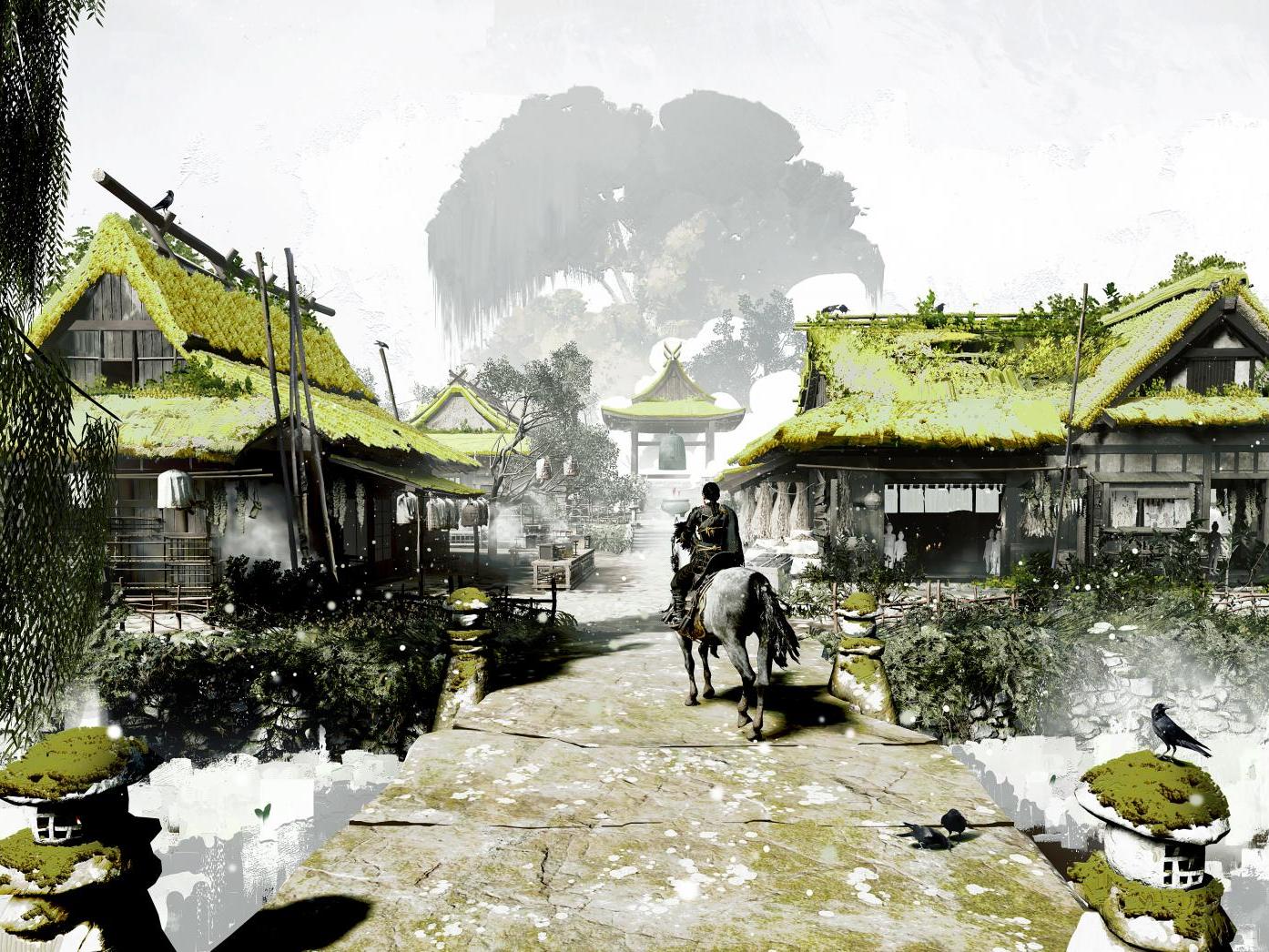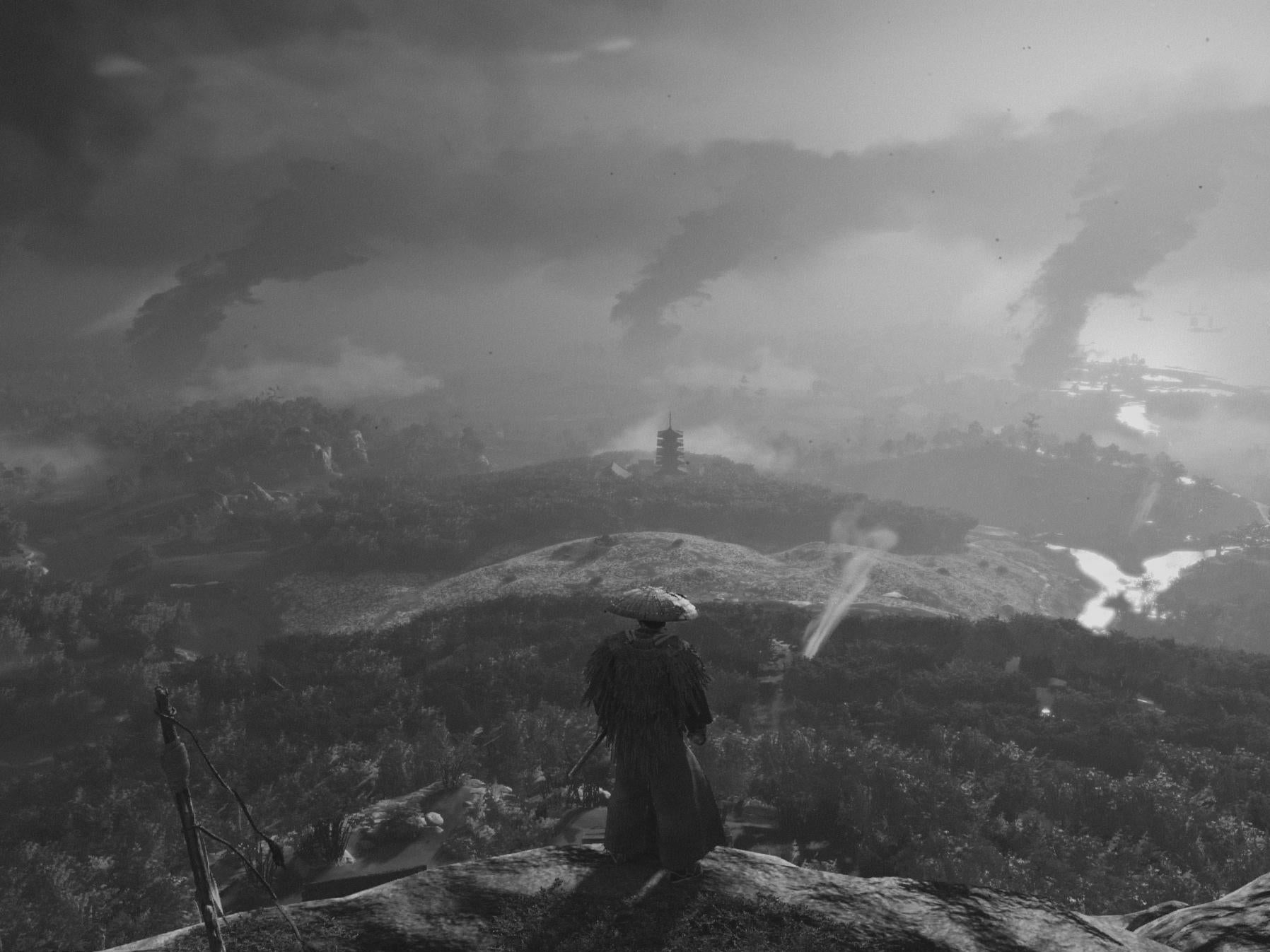Ronin on empty: How Ghost of Tsushima’s creators reworked samurai cinema into one of the year’s most anticipated games
Sucker Punch Productions crafted an ambitious tribute to classic Japanese cinema with its new PS4 epic. Studio co-founder Brian Fleming talks to Louis Chilton about the game’s six-year gestation


Your support helps us to tell the story
From reproductive rights to climate change to Big Tech, The Independent is on the ground when the story is developing. Whether it's investigating the financials of Elon Musk's pro-Trump PAC or producing our latest documentary, 'The A Word', which shines a light on the American women fighting for reproductive rights, we know how important it is to parse out the facts from the messaging.
At such a critical moment in US history, we need reporters on the ground. Your donation allows us to keep sending journalists to speak to both sides of the story.
The Independent is trusted by Americans across the entire political spectrum. And unlike many other quality news outlets, we choose not to lock Americans out of our reporting and analysis with paywalls. We believe quality journalism should be available to everyone, paid for by those who can afford it.
Your support makes all the difference.Ghost of Tsushima arrives at the end of an era. An ambitious, open-world action-adventure game set in 13th century Japan, it’s the last major release to come out exclusively on the PS4 console.
The game grew from a single desire, says Brian Fleming, co-founder of Sucker Punch Productions, to build something around melee combat. Specifically swordfighting. Everything – the genre, the setting, the characters – grew outwards from there. Because the lead creative team “all had a distinct affinity for samurai”, they began researching feudal Japan, hunting for inspiration. They eventually chanced upon an account of the Mongol invasions of the Japanese island of Tsushima in 1274. “Man, that’s a videogame if ever I’ve seen one,” Fleming thought to himself as he read about “these 80 samurai defending the island from Mongol invaders”. From that moment, around six years ago, it was clear to all at Sucker Punch what they wanted to do next – make a game that would prioritise slick, bloody combat above all else.
Prior to Ghost, Sucker Punch was known for Infamous – a parkour-inspired action-adventure set in the modern-day United States. Ghost keeps certain ideas from that series – most notably, the beautifully designed open-world environment – but is built around an entirely different combat system.
“We were refining and working on combat for the entirety of the six-year project,” says Fleming. “It took every month of that.” Their work lasted long into 2020. When the coronavirus pandemic took hold, it continued from the isolation of the developers’ own homes. Even after the game’s June release was delayed by three weeks, it was only finished in time “by the slimmest of margins”.
Much of the discussion around Ghost has concerned – and will surely continue to concern – the idea of cultural appropriation. What gives a team of Washington developers the right to tackle, and indeed monetise, a piece of such specifically Japanese history? But Fleming is quick to point out that the game was not made exclusively in the west. Sucker Punch was acquired by Sony back in 2011; he describes the studio’s relationship with Shuhei Yoshida, Sony’s former president of SIE Worldwide Studios, as “our most important advantage”. “We reached out to Shu first, and then to the team at Sony Japan, and we said, ‘We have this idea that we want to do. Is this reasonable, and can you help us make this?’”
The Japanese arm of the company would go on to participate for the entirety of the project, reviewing the game’s content, and “keeping Sucker Punch on a path that was gonna be successful and respectful, maintaining good quality and good sensitivity”. As Fleming puts it, the team were anxious to avoid “errors of ignorance”.
One of the criticisms levelled at Ghost is that its depiction of Japanese culture is only skin-deep. It is a complaint that was made a few years ago of Wes Anderson’s film Isle of Dogs, also set in a fictionalised version of Japan. Does it really want to understand and unpack Japanese culture? Or is it just interested in the aesthetics: the eye-grabbing calligraphy, the unfamiliar outfits, the idiosyncratic architecture?
As was the case with Isle of Dogs, the suggestion is harder to dismiss because the aesthetics are, besides the combat, the game’s strongest selling point. “It’s such a beautiful game,” Fleming rightly says. “The purple flowers, the orange sunsets, the greenness… It’s funny: all the counsel we got from our partners in Japan was how important it was that the world be green.”
While bird songs and environmental sounds are taken directly from the island itself – part of the partnership with Sony’s Japanese arm involved trips from Washington to Tsushima – more liberties are taken with other aspects of the game. The map, for instance, is only partly based on Tsushima, borrowing visual elements from other areas of Japan. “Even the swords that we’re using were from slightly later in time than the particular invasion we’re doing,” says Fleming. “We should be clear about the fact that this isn’t a documentary, this is an entertainment product. Of course there are some liberties taken. The characters are original. We weren’t trying to make a documentary or a textbook of exactly what happened.”
The game offers players the chance to play with a black and white visual filter, a setting referred to in-game as “Kurosawa mode”. To use the name, they got the blessing and advice from the estate of Akira Kurosawa, the legendary Japanese film director. Fleming bristles slightly when I use the term “name-drop”. “I think it’s a little more than a name-drop,” he says. “It’s actually a legitimate attempt to be respectful and appreciate the work he did. The game uses his name, rather than a generic term, because we think he played such an important role in the development of it.” This name alone – Kurosawa mode – drew scorn from cinephiles on social media; anyone who has seen Kurosawa’s late-career works like Ran or Dreams could tell you that some of his films positively fizz with colour.

It’s perhaps fitting that Ghost should try to marry itself in some small way to Kurosawa’s legacy; the filmmaker himself had a complicated relationship with cross-cultural borrowing. During his lifetime, Kurosawa was often accused of making the most Americanised films of his contemporaries. His films would be contrasted in particular with those of Yasujiro Ozu, whose slower style and domestic fixations supposedly communicated a more authentically Japanese sensibility. It was a two-way street, of course: Kurosawa’s handprints can be seen all over Hollywood cinema throughout the second half of the 20th century.
Reductive as it is, the use of the Kurosawa name is a deliberate ploy, a way of marketing the game to the (majority of) people who haven’t seen Ran, whose only exposure to Kurosawa would have been though Seven Samurai, or indirectly, through films like Star Wars or The Magnificent Seven. It’s not like the Sucker Punch developers hadn’t done their research – Fleming cites Ran specifically as one of Ghost’s central influences.
Among the other influences are Kurosawa’s 1961 classic Yojimbo, the first of two films starring Toshiro Mifune as roving samurai “Sanjuro”, and videogames like Skyrim, Red Dead Redemption and The Legend of Zelda: The Breath of the Wild. Fleming doesn’t mention Assassin’s Creed, to which Ghost has regularly been compared in the build-up to the game’s release, or the recent Soulslike fighters set in historical Japan, Nioh or Sekiro: Shadows Die Twice. Unlike these games, Ghost forswears supernatural elements; the plan was always to keep it as grounded as possible. “We never seriously considered any other option,” says Fleming. “It involved really human problems and human reactions.”
On an aesthetic level, Ghost of Tsushima is a triumph; that alone girds it with the potential to be a hit. Sucker Punch may have chosen Tsushima partly as a convenience, a pretext to flex its muscles with the mechanics of sword combat. But if Ghost ends up steering even a small fraction of its players towards the eternal genius of Akira Kurosawa, then some would say it’s doing the lord’s work.
Ghost of Tsushima is out now PlayStation 4
Join our commenting forum
Join thought-provoking conversations, follow other Independent readers and see their replies
Comments